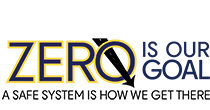U.S. Department of Transportation
Federal Highway Administration
1200 New Jersey Avenue, SE
Washington, DC 20590
202-366-4000
1. Report No. FHWA-SA-14-075 |
2. Government Accession No. |
3. Recipient's Catalog No. |
|
4. Title and Subtitle Manual for Selecting Safety Improvements on High Risk Rural |
5. Report Date August 2014 |
||
6. Performing Organization Code |
|||
7. Author(s) Jennifer E. Atkinson, Brian E. Chandler, Vernon Betkey, Karen Weiss, Karen Dixon, Anna Giragosian, Kelly Donoughe, and Cara O'Donnell |
8. Performing Organization Report No. |
||
9. Performing Organization Name and Address Science Applications International Corporation (SAIC) |
10. Work Unit No. (TRAIS) |
||
11. Contract or Grant No. Contract No. DTFH61-10-D-00024, Task |
|||
12. Sponsoring Agency Name and Address Federal Highway Administration |
13. Type of Report and Period Covered Manual for Selecting Safety Improvements on |
||
14. Sponsoring Agency Code FHWA HSA |
|||
15. Supplementary Notes James Dahlem (james.dahlem@dot.gov), Office of Safety Technologies, served as the Technical Manager for the Federal Highway Administration (FHWA). The following FHWA staff members contributed as technical working group members, reviewers, and/or provided input or feedback to the project at various stages: Jeffrey Shaw, Erin Kenley, Beth Alicandri, Nick Artimovich, Joseph Cheung, Brian Fouch, Becky Crowe, Rosemarie Anderson, Karen Scurry, Rob Ritter, Cathy Satterfield, and Gabe Rousseau. Additionally, many individual safety partners representing Federal, State, Tribal, and local agencies and professional associations made significant contributions to this project; special thanks to Joseph Bonga (Bureau of Indian Affairs), Richie Beyer (Elmore County, Alabama), Matthew Enders (Washington DOT), Dave Brand (National Association of County Engineers; Madison County, Ohio), Marie Walsh (National Local Technical Assistance Program Association; Louisiana LTAP), Brian Roberts (National Association of Counties), Greg Parker (American Public Works Association), Ken Mammen (Utah DOT), and Joe Marek (Clackamas County, Oregon). |
|||
16. Abstract This manual provides information on the costs and benefits of safety treatments on high-risk rural roads (HRRR). Agencies can use this manual to determine the following information on the treatments: Safety benefits; Costeffectiveness comparison of safety treatments; Applicability of treatment deployment with respect to identified need; and Initial and reoccurring maintenance costs associated with countermeasure installation. In addition, this manual provides information on the decision-making process necessary to identify treatments. |
|||
17. Key Words High Risk Rural Roads, Safety Treatments, Safety Management, Safety Funding Sources
|
18. Distribution Statement No restrictions. |
||
19. Security Classification (of this report) Unclassified |
20. Security Classification (of this page) Unclassified |
21. No of Pages 176 |
22. Price N/A |
Form DOT F 1700.7
(8-72)
Reproduction of completed page authorized.
